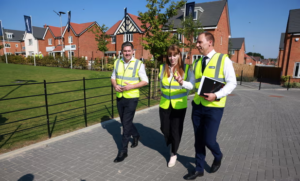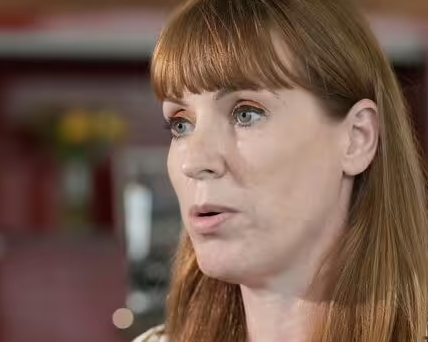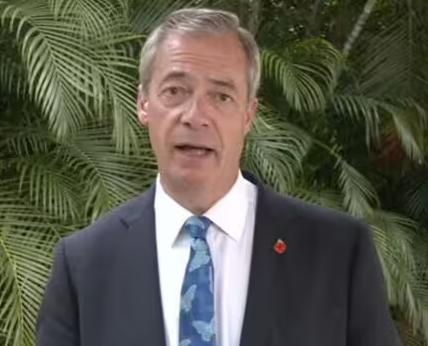Exclusive: Housebuilders blame decline on former government’s decision to end binding targets for local authorities

Angela Rayner, the deputy prime minister, at a housing development in Basingstoke. Labour has pledged to build 1.5m homes over the parliament. Photograph: Ian Vogler/Reuters
Planning approvals for new houses in England have dropped to a 10-year low, according to new figures that underline how difficult it will be for Labour to hit its target of building 300,000 homes a year.
The data, from the Home Builders Federation (HBF), shows the number of new houses being approved is just over half what it was three years ago, having fallen to a level not seen since 2014.
Builders blame the drop on the decision by the former government to drop binding housing targets for local authorities. Labour has now reversed that move, but experts say much more will be needed to hit the government’s target of 1.5m new homes over the parliament – a pledge that the prime minister has put at the centre of his plan to boost growth.
Neil Jefferson, the chief executive of the HBF, said: “The steep fall in planning permissions starkly illustrates the challenge the new government faces to boost housing supply.”
The figures, which were collated by the analysis company Glenigan, show 53,379 new houses were approved in three months to the end of June – 3% fewer than in the previous month and 13% fewer than in the same period in 2023.
The number of approvals has been dropping since the beginning of 2022 and has now hit a level last seen in 2014, when housebuilding fell sharply in large part because of a fall in the number of social homes.
The number of new housing schemes, meanwhile, has dropped to a level not seen since the HBF began collecting that data in 2006, as builders continue to build more houses on fewer sites as a way to avoid planning objections. Only 2,394 new schemes were started in the second quarter of the year, 9% below the same period in 2023 and half the number that were being built six years ago.
The steepest drops came in L ondon and the East Midlands, where the number of approvals has dropped more than 40% in the last year.
Michael Gove, the former housing secretary, has previously singled out the Labour mayor of London, Sadiq Khan, for underdelivering on his housing targets, a fact Gove blamed on onerous social housing targets. Experts say, however, that the recent decline has been driven mainly by Gove’s decision to end mandatory housing targets for local planning authorities.
The former minister first said he would drop the targets in 2022 and formally did so in 2023; during that interim period, many councils paused the process of drawing up their housing plans while they waited for more certainty.
The pressure on housing has helped trigger an increase in rents, which rose 8.4% in the year to August, according to data released by the Office for National Statistics on Wednesday. House prices rose 2.2% over the same period.

Labour’s intended changes to the planning regime in its bid to kickstart housebuilding, include making it easier to build on green belt land, and for public bodies to issue compulsory purchase orders.
Experts say, however, that the planning changes will not be enough to hit the 300,000 target without also increasing the amount of social homes being built by the public sector.
The HBF is also calling for the government to roll out a short-term scheme to make mortgages more affordable for buyers, though economists warn that inflating demand before new houses are built is likely to push prices even higher.
Labour has promised to keep the previous government’s mortgage guarantee scheme but is preparing to tighten the rules over right to buy, the scheme that offers people discounts to buy their own council house.
Jefferson said: “The lack of affordable mortgage availability means more support for buyers is needed. Creating demand for new homes provides the confidence the industry needs to invest and deliver both private and affordable homes.”




